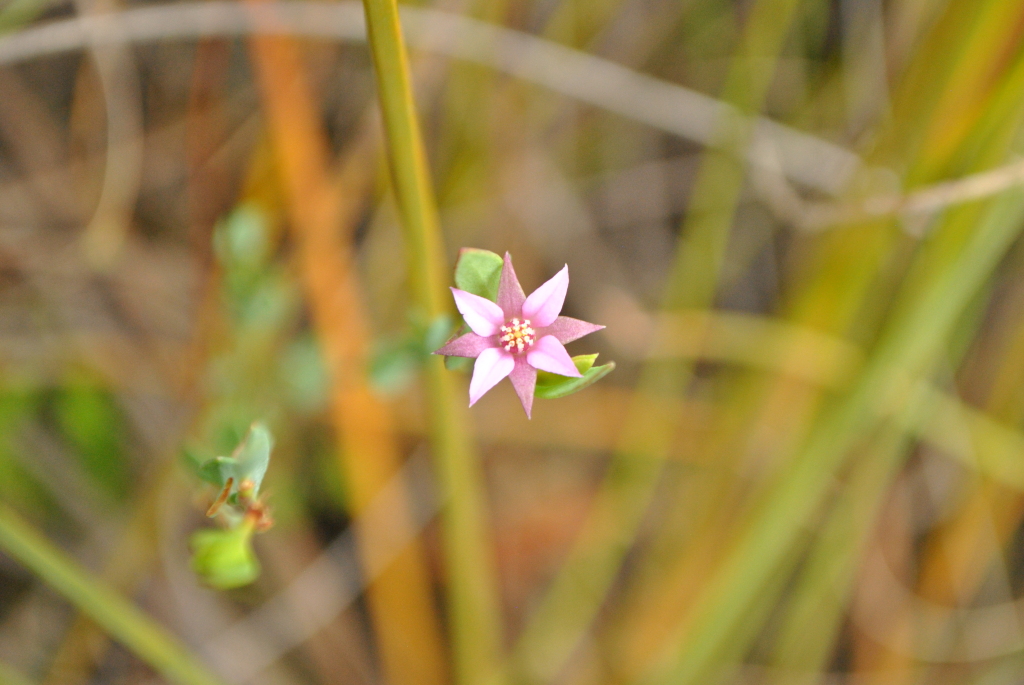Boronia parviflora
Sm. Swamp BoroniaGlabrous, suberect to decumbent subshrub to 40 cm high or wide, sometimes reddish or purplish. Leaves sessile or subsessile, simple, elliptic to narrow-elliptic or linear-obovate, 7–26 mm long, 1.5–6.5 mm wide, acute, sometimes mucronate, concolorous to slightly discolorous. Inflorescence terminal and in upper axils, 1(–3)-flowered; pedicels 2–11 mm long. Sepals deltoid, 2.5–6 mm long, valvate, glabrous, green or red; petals c. equal to sepals, pale to bright pink or white or green, imbricate, midrib not raised, deciduous; stamens 4–8, filaments pilose; style obscured by globular stigma. Follicles glabrous, 2.5–4 mm long; seed 1.5–2 mm long, black, smooth, shiny. Flowers spring–autumn.
GleP, VVP, VRiv, GipP, OtP, WaP, CVU, GGr, EGL, EGU, WPro, HSF, HNF, OtR, Strz. Also SA, Qld, NSW, Tas. Patchily distributed through southern Victoria, mainly in wet heath and swampy areas.
This species is unique amongst Boronia in eastern Australia in having 4, 6 or 8 stamens.
Duretto, M.F. (1999). Rutaceae. In: Walsh, N.G.; Entwisle, T.J., Flora of Victoria Vol. 4, Cornaceae to Asteraceae, pp. 153–197. Inkata Press, Melbourne.
 Spinning
Spinning


